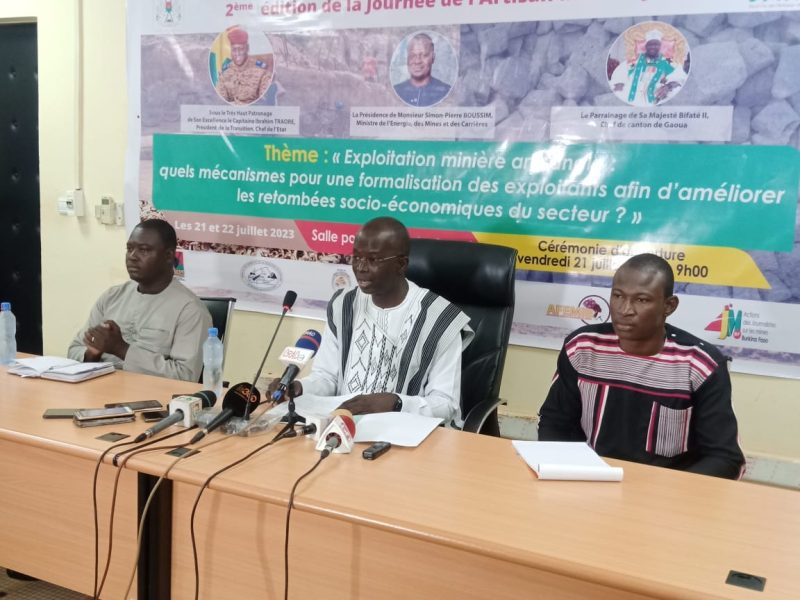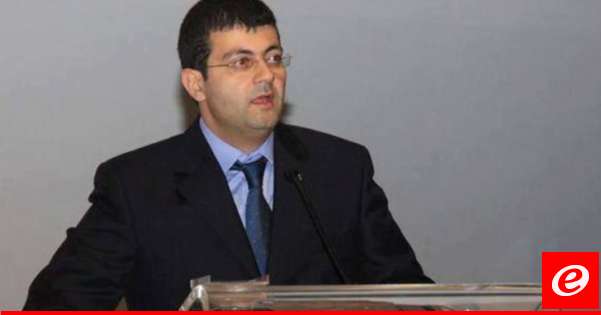- 600 gold panning sites, 16% contribution to GDP
- Formalize farms to get the most profit
- 500 participants expected
On July 21 and 22, 2023, players in the artisanal mining sector will meet in Gaoua, in the province of Poni, South-West region, where the second edition of the Artisan Mining Days will be held. (JAMS). Thursday, July 12, less than two weeks from the holding of these Days, the organizing committee invited the press to Ouagadougou not only to announce the event, but also to explain its contours. Main host of this press conference, the Secretary General of the Ministry in charge of Mines, Jean-Baptiste Kaboré, also President of the JAM 2023 Organizing Committee.
By instituting Artisan Mining Days, the Burkinabè authorities started from the observation that artisanal gold mining, commonly known as gold panning, has experienced prodigious development in Burkina Faso over the past two decades. According to the SG of the supervisory ministry, which refers to a 2018 map, more than 600 active gold panning sites are listed in Burkina Faso and more than a million Burkinabè live from this activity with a contribution of 16% to GDP. . At the same time, the field of artisanal quarrying, particularly of building materials, has experienced a boom, mobilizing women and young people there too, although working in precarious conditions. According to the SG of the Ministry of Mines, “the enthusiasm for the artisanal mining and quarrying activity has been accompanied by substantial benefits for the direct and indirect actors”.
If it is true that the craze for the activity of artisanal mining and quarrying has been accompanied by spin-offs, it is just as true that these spin-offs have gone hand in hand with harmful effects, both on the environmental as economic and social. In detail, artisanal mining, through the lack of supervision, has often been the cause of landslides, deforestation and pollution, not to mention the fact that it is a source of financing for terrorism. , when the sites of exploitation are not nests of recruitment of terrorists, according to studies. “For several years, efforts have been made to better regulate the sector, but it is clear that difficulties in terms of regulations persist,” said the SG of the Department of Mines.
To make the most of this sector for the national economy and limit the harmful effects, the Burkinabè authorities have chosen to formalize the operators. Hence the theme “Artisanal mining: what mechanisms for the formalization of operators in order to improve the socio-economic benefits of the sector” chosen for the JAM 2023. By formalization, we mean, according to the SG of the Ministry of Mines, the organization of miners into economic units or structures that give way to semi-mechanized logging. For two days, more than 500 participants (craftsmen, public administration and private sector players) will think about it by dissecting the general theme. Organized in concert with organizations of artisanal miners, technical and financial partners and NGOs working in the field, the JAM 2023 also plans exhibitions and B2B meetings, not to mention many other activities on the sidelines. The end goal of all of this is to “bring about positive changes in the exploitation of artisanal sites in order to have an organized and responsible artisanal mining sector”, explained the president of the JAM National Organizing Committee, Jean- Baptiste Kabore.
Beranger Kabre
Box: what will be discussed during the exchanges at the JAM 2023
According to the National Organizing Committee, JAM 2023 participants will exchange around five sub-themes entitled as follows:
-
From CBMP to ANEEMAS, what lessons can be learned?
-
Sustainable artisanal mining: challenges and issues related to its organization;
-
Contribution of actors to the formalization of artisanal mining;
-
Artisanal exploitation of quarry substances: challenges and prospects, for a better contribution to the national economy;
-
Prevention of conflicts between industrial mining companies and artisanal miners


